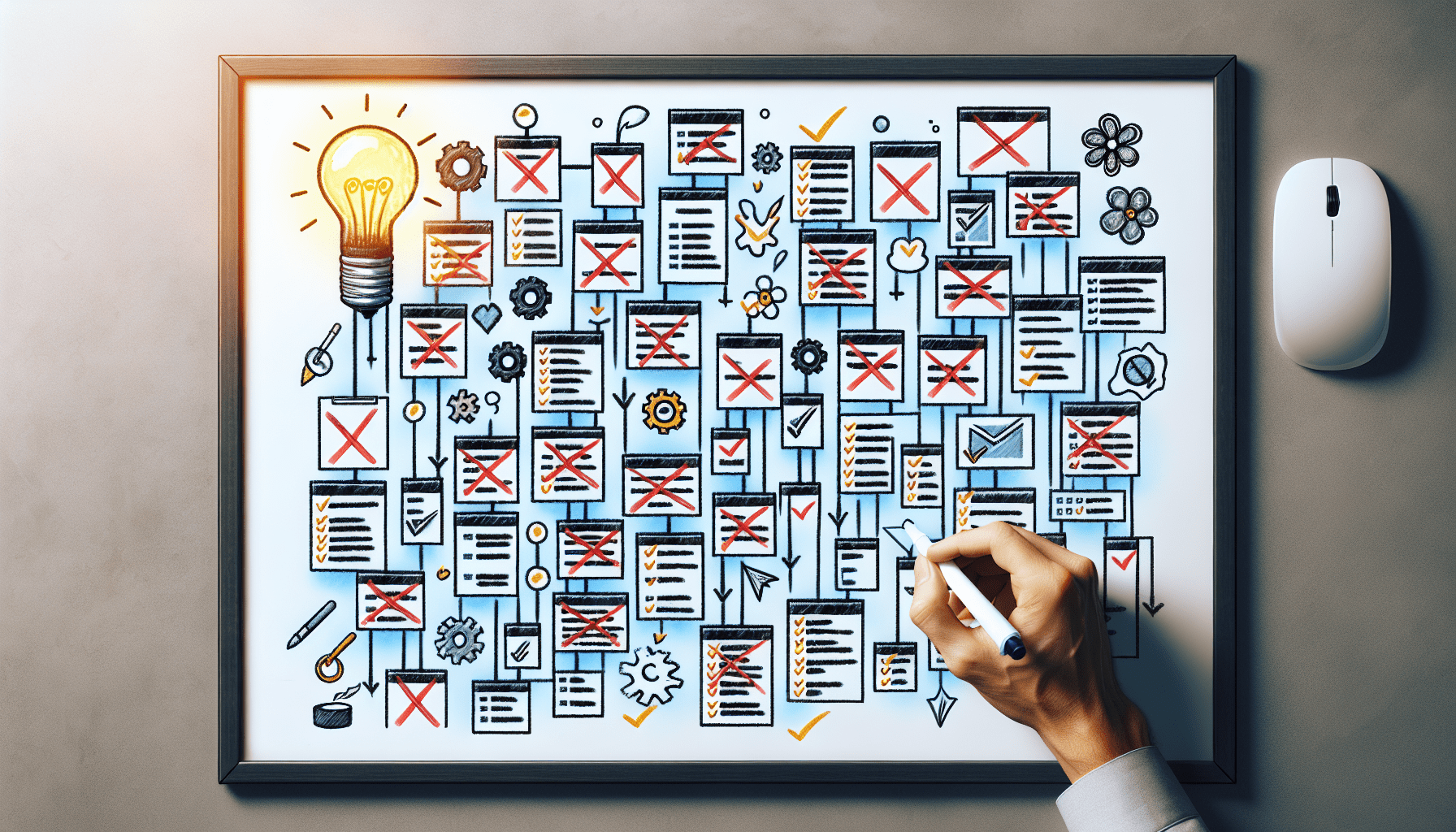
Remote Work: Strategies for Optimal Work-Life Balance

Did you know that remote employees work an average of 9.4 unpaid hours of overtime each week? This fact comes from a 2021 survey by ADP1. It shows the challenges of balancing work and personal life in remote jobs. It’s vital to find good strategies for this balance as more people work from home.
Working remotely can make it hard to separate work and personal time. This can lead to more stress and less work done. Always being online can affect your personal life, making it hard to relax2. So, it’s key to know how to manage this online work world to keep a good balance.
To improve your work-life balance, try making a structured schedule for remote work. Use tools for working together online and set clear work and personal time limits. Studies show that having a routine with breaks and using tech to manage work is important23. Also, taking care of yourself and doing hobbies can help reduce stress and keep your life balanced. For more on hobbies and work-life balance, check out Effortless Essential.
Key Takeaways
- Remote employees average 9.4 unpaid overtime hours weekly1.
- Clear boundaries between work and personal life are essential2.
- Utilising virtual collaboration tools can enhance productivity and balance.
- Scheduled breaks and non-work activities boost overall well-being3.
- Self-care and hobbies are vital for reducing stress and improving work-life balance2.
Understanding Remote Work and Its Challenges
Remote work is now a big part of our jobs, thanks to tech progress and workers’ new wants. Working from home has many perks but also brings challenges. These need to be tackled to keep productivity and job happiness up45.
Defining Remote Work
Remote work means doing your job from somewhere other than a traditional office, usually from home. It gives workers more control over their time, making work more efficient. It’s especially popular in IT and tech, where tech helps work smoothly4. About half of workers want to keep working fully remote5.
Common Challenges Faced by Remote Workers
Remote work has its downsides too. It can be hard to separate work from home life, leading to longer workdays5. Distractions like family, pets, and doorbells can also make it hard to focus5. Feeling lonely and missing human contact are big concerns for remote workers5.
To manage these issues, setting clear work boundaries and using tools to block distractions helps. Working regular hours is also key5. Plus, it’s better for the planet since it cuts down on commuting and pollution4.
Remote work affects different jobs in different ways. It’s less common in healthcare but more so in admin roles4. It’s changed education too, with more online learning4. To deal with challenges, using techniques like the Pomodoro Technique and the Eisenhower Matrix can help manage tasks better as a remote worker5.
The Importance of Work-Life Balance for Remote Workers
For remote workers, a good balance between work and life is key. It greatly affects their well-being and how much they get done. Setting up a home office right is crucial for a positive work environment. This helps those working from home feel less isolated or trapped by work.
Studies show that remote workers are about 20% happier than those in offices. Over 70% think working from home helps them balance work and life better6. But, stress from work costs the U.S. $300 billion a year in health bills and lost wages7. Managers should encourage breaks and exercise to fight burnout and boost productivity6.
Remote work has changed what people expect and want. Google employees don’t like being forced to work from the office three days a week. They value being able to work flexibly6. Setting clear work hours and doing personal activities outside work helps keep a good balance. It also fights against feeling lonely or isolated8.
The Future Forum’s 2022 survey found that working full-time from the office made people the least happy with their work-life balance. But, those working fully from home were the happiest6. It’s important for remote workers to keep in touch and network online to fight loneliness and stay mentally healthy7.
Managers and companies need to create a work culture that supports remote workers’ well-being. By promoting good work-life balance, they can lower the chance of burnout. This leads to a happier and more productive team.
Creating a Productive Home Office Space
Having a dedicated workspace is key for staying productive and feeling good while working from home. It should be separate from areas meant for relaxing or other activities.
Choosing the Right Workspace
The ideal workspace should be quiet and free from distractions. This is vital for 85% of remote workers to focus better and cut down on interruptions9. Most remote workers, 68%, like natural light in their workspace to lift their mood and energy9. Adding personal touches, like things that inspire them, is also important for 63% of remote workers9.
Essential Office Equipment
Having the right tools is crucial for working from home effectively. A strong internet connection and stable tech are top priorities for 76% of remote workers for smooth work9. Also, 72% invest in ergonomic furniture to stay comfortable and avoid strain9. Regularly checking and adjusting the home office setup is a habit for 95% of remote workers to stay productive9.
Minimising Distractions
Reducing distractions is key for remote workers. Keeping the workspace tidy is a strategy used by 91% of remote workers to boost productivity9. Managing noise is also crucial, with 84% of remote workers finding ways to cut down on sounds that distract them and help them concentrate9. Using noise-cancelling headphones or making a quiet space helps in building a productive digital workplace culture.
Setting a Consistent Remote Work Schedule
For remote workers, sticking to a regular work schedule is key to a good work-life balance. It’s important to set clear work hours and break times. This helps separate work from personal life.
Creating and Maintaining a Daily Routine
Starting a daily routine means setting clear work hours. Most remote workers, 89%, say they have a better work-life balance with clear boundaries10. Taking regular breaks is also crucial, as 82% of remote workers find it boosts productivity10. These breaks help you recharge and stay efficient.
Time Management Techniques
Managing your time well is essential in remote work. Techniques like prioritising tasks and time blocking help 73% of remote workers be more productive10. Using technology to make work easier is also key; 95% of remote workers use tools and automation for a better work-life balance10. This improves individual performance and team productivity.
Leveraging Technology for Better Remote Work Management
Using technology is key to keeping remote teams efficient and happy. It’s important to use *virtual collaboration tools* and build a strong *digital workplace culture*. This helps teams work better together and stay productive.
Communication Tools
Good communication is vital for managing a remote team. Tools like Slack and Microsoft Teams have made working together easier, boosting collaboration by 23%11. Video calls with tools like Zoom keep 75% of employees motivated and on the same page11.
Most remote workers use mobile devices for work, making sure everyone stays connected12. Companies that use storytelling platforms see a 30% increase in job satisfaction among their remote staff11. Regular feedback also makes employees 30% happier, as seen at companies like Microsoft11.
Project Management Software
Project management software is crucial in a digital workplace. It helps teams manage tasks, deadlines, and work together better. Tools like Asana and Trello make it easier to work together in real-time, improving project success by up to 25%11.
Companies that use data to improve HR see a 30% increase in employee engagement11. 60% of employers now use mobile tech to keep an eye on remote work and manage performance12. This ensures everyone is clear on their tasks and goals.
Using *virtual collaboration tools* and strong project management software is key to a successful *digital workplace culture*. It helps remote teams do well in today’s changing work world.
Balancing Work and Personal Life
For remote workers, balancing work and personal life is key to avoiding burnout. Work-life integration techniques help a lot here. It’s important to take regular breaks to keep your mind sharp and rest during the day. Many companies now offer telecommuting policies like the 6-hour workday or 4-day week to help with this13
Integrating Breaks into Your Routine
Breaks are vital for remote employee well-being. Working set hours helps create a routine, making it easier to work and rest in chunks13. Taking breaks from the screen helps you recharge, boosting creativity and focus. Listening to your body and taking holidays is also key for a good work-life balance13.
Setting Boundaries between Work and Home Life
It’s crucial to set clear boundaries to protect your mental health and keep work out of your personal time14. Remote workers often feel like they’re always working, which can mix up work and personal life14. Good telecommuting policies help set these boundaries. Companies see that having separate work and rest areas boosts job satisfaction and engagement13.
Using work-life integration techniques helps you sort tasks and keep time for hobbies. Managing your space to reduce distractions and planning your work helps too. Starting and ending your workday with a walk can really help with this13. It’s not just about being in a different place, but also being mentally ready to switch off for personal time.
Effective Communication within the Remote Workforce
Effective communication is key for remote teams to understand each other and work towards common goals. It makes sure everyone knows what’s going on and works well together.
Regular Check-Ins with Team Members
It’s important to keep in touch with your team regularly. A 2023 report by Owl Labs showed 62% of workers aged 22 to 65 work from home sometimes, up from before the pandemic15. Video calls or using project management tools for check-ins helps keep track of work and solve problems together.
Buffer’s 2023 report said 98% of remote workers want to keep working from home, at least sometimes, for their careers15. Having regular meetings makes sure everyone feels part of the team and valued.
Managing Expectations and Deliverables
It’s key to set clear expectations and deadlines to avoid misunderstandings. A Stanford University study found remote workers are 13% more productive than those in the office, thanks to fewer distractions and less travel time15. Clear rules and deadlines keep the team on track.
A Gartner survey showed 74% of CFOs plan to keep some staff working from home after the pandemic, showing a big move to use remote work to find diverse talent15. This means we need strong ways to manage remote teams to meet project goals.
Flexible work arrangements that respect everyone’s time while keeping them accountable can make remote work better for everyone. It helps the company and its workers.
Maintaining Physical and Mental Well-being
Looking after Remote Employee Well-being is key, given that 79% of British workers feel stressed at work16. It’s vital to balance work and personal life to avoid burnout and lower stress.
Remote workers need a steady routine to stay productive and keep a good Work-Life Balance for Remote Workers17. Taking breaks, like lunch and screen breaks, helps manage stress and stay focused17. Setting achievable goals also helps avoid overworking and its risks16.
Keeping fit is crucial for Remote Employee Well-being. Offering fitness perks can motivate remote staff to exercise, which cuts down on anxiety and depression16. Mindfulness activities like yoga or meditation also support a balanced life.
It’s important to stay connected with colleagues and family for mental health17. Regular online chats and personal meetings help spot and solve issues. They also build a strong bond with employers and support Mental Health in the Workplace16. An Employee Assistance Programme (EAP) offers support for personal or work issues16.
It’s key to set clear lines between work and home life to avoid stress and keep a good balance16. Employers encouraging these boundaries help reduce stress and let remote workers unwind, a big challenge18. These steps create a positive and lasting remote work culture.
Adopting Flexible Work Arrangements

Flexible work arrangements can greatly improve your work-life balance by fitting your work hours to your life. This trend is key in modern work-from-home policies. From 2023 to November, more U.S. companies started offering flexibility, from 51% to 62%19. This shows a big shift towards valuing flexible work to keep top talent.
Customising Work Hours to Fit Personal Needs
Adjusting your work hours helps you manage personal tasks, like family or health needs. Being flexible means you can work in focused periods. A 2023 survey found half of employers think flexible hours make employees happier and more productive20. Companies that went fully flexible from 2020 to 2022 saw a 21% revenue jump, compared to just 5% for those needing in-person work19. This proves flexible work is good for both workers and employers.
Alternative Work Arrangements for Different Lifestyles
Jobs can be shared, workweeks compressed, or flexi-retirement programs offered to suit different lifestyles. These options help with work-life balance and keep performance high. Over two-thirds of U.S. companies plan to offer flexible and remote work by 202419. These policies draw in current staff and new hires. McKinsey & Company found 40% of workers see flexibility as a key reason to stay in a job20.
Flexible work shows a smart way to engage and boost a workforce. Done right, it creates a balanced life, blending work and personal life smoothly.
Work-Life Integration Techniques
Work-life integration means blending work and personal life smoothly. It’s popular among those who work remotely. Many employees like remote work for its flexibility, which helps them manage work and personal life better21
Doing personal tasks during work hours and using flexible home offices helps a lot. This way, you can align work with personal life for a better balance. The Digital Workplace Culture has grown thanks to these methods, making workers happier and more productive. UC Berkeley’s Haas School of Business suggests focusing on being fully present and attentive, not just working long hours22.
Using flexible hours and other arrangements lets remote workers blend their life fully. After Covid-19, more companies started offering remote work and flexible schedules. This shows a big move towards better work-life balance22. It’s important to take breaks and set clear work-life boundaries to stay mentally healthy and avoid burnout21.
Employers can help by creating a supportive Digital Workplace Culture. Offering recognition, well-being resources like counselling, and support is key. These efforts keep remote workers motivated, happy, and help meet company goals21.
In conclusion, using different Work-Life Integration Techniques helps achieve a balance. This balance supports both career success and personal happiness.
Conclusion
Achieving a good Work-Life Balance for Remote Workers is key for staying productive and happy. Having a dedicated home office helps reduce distractions and boost focus23. Setting a regular work schedule and using technology wisely are vital for keeping Virtual Team Productivity high2425.
Employers should support work-life balance by encouraging breaks and setting clear work-home boundaries to avoid burnout24. The 36th Annual Conference of the Society of Industrial and Organisational Psychology showed that good management and support can make remote workers happier and more productive24.
As remote work grows, it’s important for everyone to focus on Remote Employee Well-being with flexible work setups and good work-life integration2325. Creating a remote work culture that cares for balance and well-being helps both employees and employers do well in today’s digital world.





















